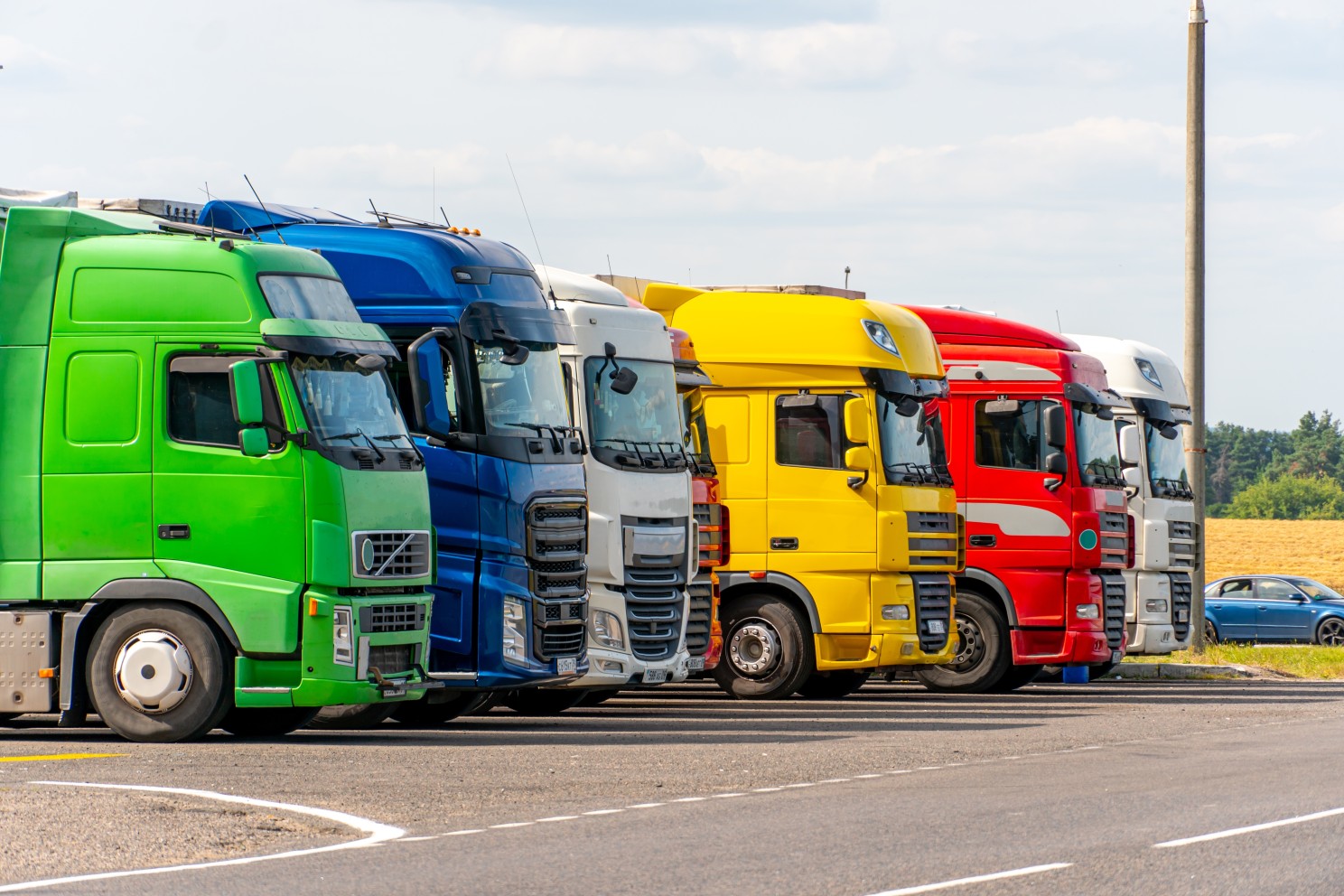
Susie Jones
Как решить проблему разнообразия водителей в отрасли
Создано: 21.08.2024
•
Обновлено: 21.08.2024
Если мы попросим вас описать водителя грузовика, ваш ответ может представлять собой стереотипный образ пожилого белого мужчины. Так ли это? Традиционно в индустрии грузоперевозок преобладали мужчины. С годами отрасль стала более разнообразной и открыла возможности для женщин, людей разного возраста и происхождения. Разнообразие растет, но внешние вызовы, такие как Brexit и пандемия, сдерживают этот процесс.
Женщины в индустрии
Несмотря на нехватку до 100 000 водителей грузовых автомобилей в Великобритании, только от 1 до 3 % дальнобойщиков - женщины. Так почему же все больше женщин не соглашаются на жизнь в дороге?
Безопасность: По оценкам 60 % женщин-дальнобойщиков чувствовали себя небезопасно во время работы. Многие из них говорили о необходимости парковаться под фонарем, планировать свои остановки и носить с собой перцовый баллончик.
Техника и оборудование: С точки зрения эргономики, грузовики были созданы для мужчин. В прошлом женщины считали, что тянуться к органам управления, регулировать сиденья и другие физические аспекты работы сдерживают их. Однако благодаря технологическому прогрессу физические нагрузки не являются проблемой. Большинство современных грузовиков оснащены гидроусилителем руля и автоматической коробкой передач, что облегчает работу.
Несмотря на эти неудачи, женщины добиваются того, чтобы их голоса были услышаны, и добиваются перемен в отрасли. Такие водители, как [Джоди Смит] (https://www.instagram.com/pinktrucker90/?hl=en), являются бесценными защитниками отрасли. Джоди делится своим опытом работы в сфере грузоперевозок в Интернете и доказывает, что эта отрасль - не только мужской мир.
"Вождение грузовика - это не мужская работа, я могу делать эту работу с полным набором акриловых красок! Она довольно физическая, но не тяжелая", - утверждает Джоди, когда [мы беседовали с ней в 2021 году] (https://fleetpoint.org/driver-training-safety/driver-safety-2/are-women-the-future-of-trucking/). Имея за плечами семилетний опыт работы, Джоди продолжает выступать за то, чтобы больше женщин присоединялось к сообществу грузоперевозчиков.
Результат, который может привести к повышению безопасности на дорогах - данные Американского института транспортных исследований (https://truckingresearch.org/) показывают, что женщины являются более безопасными коммерческими водителями. Мужчины-водители на 20 % чаще попадают в аварии по сравнению со своими коллегами-женщинами.

Возрастное разнообразие в отрасли
По данным Управления национальной статистики, средний возраст водителя грузового автомобиля составляет сорок восемь лет, а 47 % водителей грузовиков в Великобритании старше пятидесяти лет и собираются в ближайшее время выйти на пенсию. Эти статистические данные, а также текущая нехватка водителей свидетельствуют о необходимости привлечения в отрасль более молодых водителей.
Это легче сказать, чем сделать; многие молодые водители сталкиваются со следующими проблемами:
Обучение: Получение прав коммерческого водителя может стоить до 2 000 фунтов стерлингов
Страхование: Хотя минимальный возраст для управления грузовиками в Великобритании составляет 18 лет, многим трудно получить страховку.
Опыт: Некоторые компании хотят нанимать опытных водителей, что может стать препятствием
Условия: Жизнь дальнобойщиков может быть очень тяжелой - долгие часы работы и время, проведенное вдали от близких, могут стать сдерживающим фактором. Однако в жизни на дороге есть много плюсов, таких как общение, путешествия, зарплата и стабильность работы.

Компаниям, ищущим водителей, выгодно нанимать молодых дальнобойщиков. Они с большей вероятностью адаптируются к постоянно меняющейся отрасли. Кроме того, они быстро учатся и приветствуют технологические новинки. Увеличение числа молодых водителей в отрасли приведет к снижению текучести кадров, что сократит расходы компании. Это также обеспечит удовлетворение растущего спроса на товары и услуги.
Однако какие проблемы могут возникнуть у вас, если вы пожилой водитель? Некоторые считают, что возраст влияет на физические и когнитивные способности, что сказывается на способности к безопасному вождению. А это жизненно важно для водителей грузовиков, поскольку им приходится работать подолгу, испытывать физические нагрузки и стрессовые ситуации.
FMCSA устранило эти опасения. Правила требуют, чтобы пожилые водители часто проходили медицинские осмотры и оценивали свои навыки вождения. Недавно стало известно, что 90-летний водитель грузовика из Шеффилда продолжает работать на грузовике после получения заключения о состоянии здоровья. Многие утверждают, что пожилые водители обладают опытом и знаниями, накопленными за десятилетия, и считают, что если они здоровы, то препятствий для трудоустройства быть не должно.
Как разнообразие может решить проблему нехватки водителей?
В 2022 году Управление по делам ветеранов выделило 100 000 фунтов стерлингов благотворительной организации Veterans into Logistics. Эта благотворительная организация предлагает ветеранам возможность стать водителями грузовых автомобилей. Финансирование позволило благотворительной организации значительно увеличить ежегодный объем обучения, расширить штат сотрудников и увеличить количество доступных тренингов в три раза. Компании XPO, ASDA и Muller Milk & Ingredients активно нанимают ветеранов непосредственно после обучения.
Кроме того, компания ASDA выделила 40 000 фунтов стерлингов на дальнейшее обучение. Поддержка таких благотворительных организаций, как Veterans into Logistics, создает более разнообразную культуру вождения грузовиков и одновременно активно борется с существующей нехваткой водителей.
Что можно сделать для привлечения большего разнообразия?
Наличие разнообразного персонала открывает компании доступ к различным точкам зрения и опыту. Что могут сделать компании для привлечения разнообразного персонала?
Инвестируйте в обучение: Обучение сотрудников таким темам, как неявные предубеждения, инклюзивность на рабочем месте, предотвращение дискриминации и поддержка разнообразного персонала, может оказать положительный эффект.
Инвестируйте в инклюзивный процесс найма: Анонимизация резюме кандидата может снизить уровень неосознанной предвзятости.
Продвигайте инклюзивную культуру: Расскажите потенциальным кандидатам о том, как вы решаете текущие проблемы многообразия и инклюзивности.
Обращайтесь к группам, недостаточно представленным в этой отрасли.
Продвижение и приветствие разнообразной культуры в сфере вождения грузовиков может принести значительную пользу отрасли. Это не только будет способствовать созданию более инклюзивной и благоприятной рабочей среды, но и поможет решить проблему нехватки водителей. Компании, занимающиеся грузоперевозками, обязаны принимать разнообразие так же, как и водители грузовиков.

В какой стране востребованы водители грузовиков?
В отчете, опубликованном в декабре 2022 года, говорится, что с 2020 по 2021 год нехватка водителей в Европе выросла на 42 %. На первом месте оказалась Великобритания, где число вакантных мест для водителей достигло 100 000. Мексика и Китай также занимают первые места в списке, причем в Мексике нехватка водителей выросла на 30 %, а в Китае - на 140 %.
Нужны ли нам водители грузовиков в будущем?
Появление самодвижущихся грузовиков заставило многих предположить, что у водителей грузовиков нет будущего. Однако это далеко не так.
Автономные грузовики будут постепенно внедряться в определенных регионах. Вероятность того, что это затронет большинство водителей, невелика.
Если бы автономные грузовики были внедрены по всему миру, водители все равно были бы нужны. Спрос на водителей грузовиков будет только расти, поскольку слишком много вещей может произойти, если в кабине не будет водителя.
Каковы стереотипы о водителях грузовиков?
Мы знаем о важности водителей грузовиков, но в глазах некоторых людей с этой отраслью все еще связаны негативные стереотипы - такое представление может быть связано с искажением информации в СМИ, а иногда и с неопытностью водителей. Но что это за стереотипный образ? И почему он ошибочен?
Лишний вес - На некоторых стоянках для грузовиков предлагают нездоровый фастфуд, из-за чего может сложиться впечатление, что водители грузовиков едят только его. Однако это, конечно, не норма. Здоровое питание в дороге может быть непростой задачей, но многие придерживаются сбалансированной диеты и регулярно занимаются спортом. Ознакомьтесь с нашими советами по здоровому питанию в дороге.
Плохие водители - стереотип, который не может быть дальше от истины. Профессиональные водители грузовиков очень серьезно относятся к безопасности. Они часто соблюдают скоростной режим, проявляют повышенную осторожность в сложных погодных условиях и оставляют достаточно места между собой и другими водителями.
Нецензурная брань - все мы испытываем ярость на дороге, и дальнобойщики - не исключение. Однако несправедливо возлагать этот стереотип исключительно на дальнобойщиков.
Все дальнобойщики - мужчины. Мужчин в этой отрасли больше, чем женщин, однако число женщин-водителей растет.



